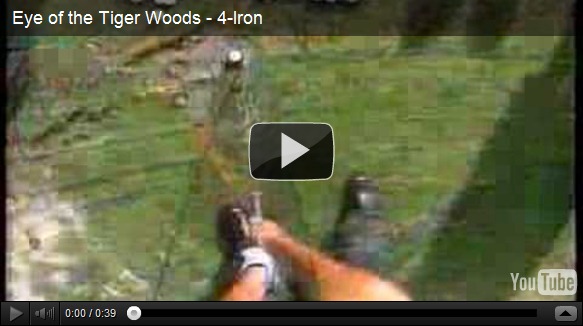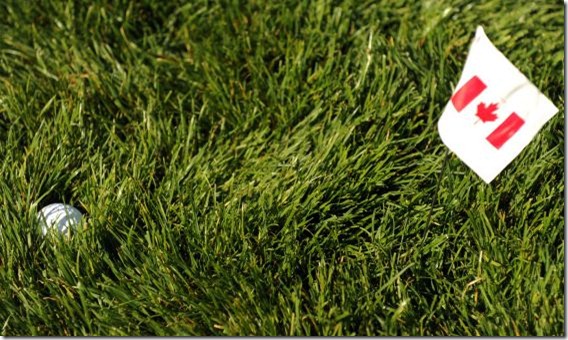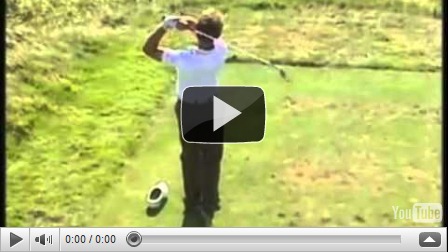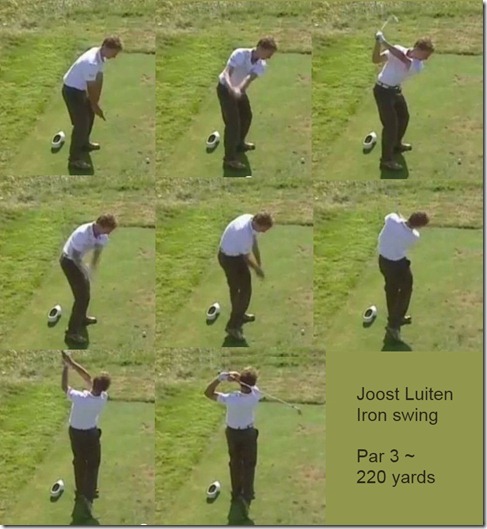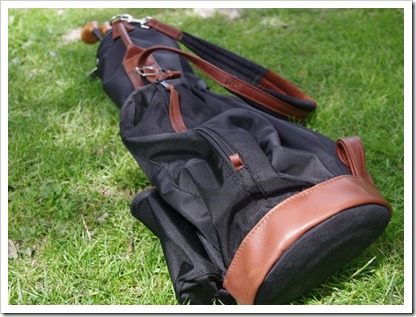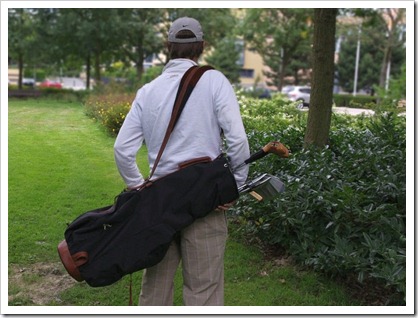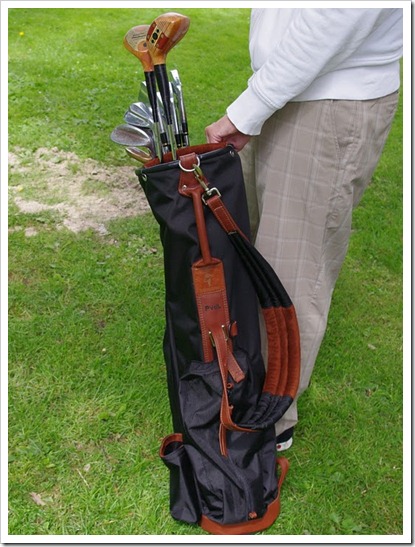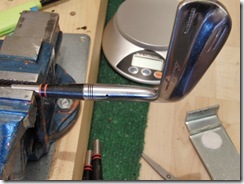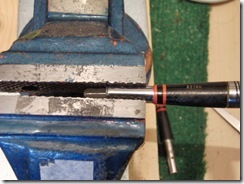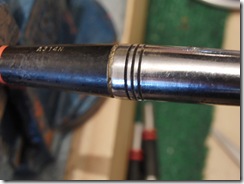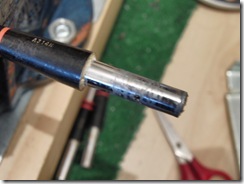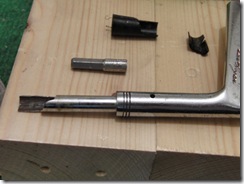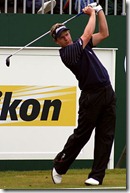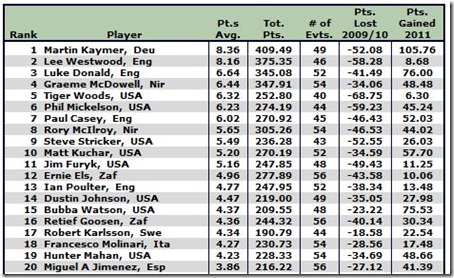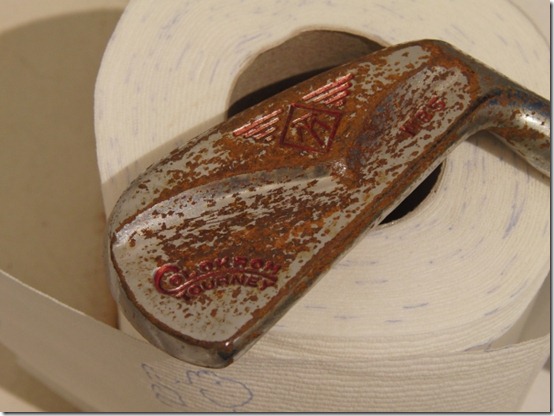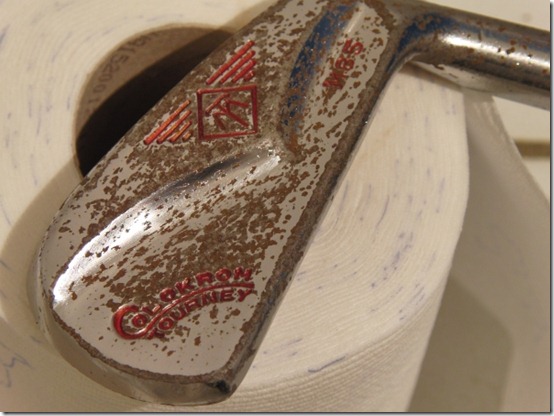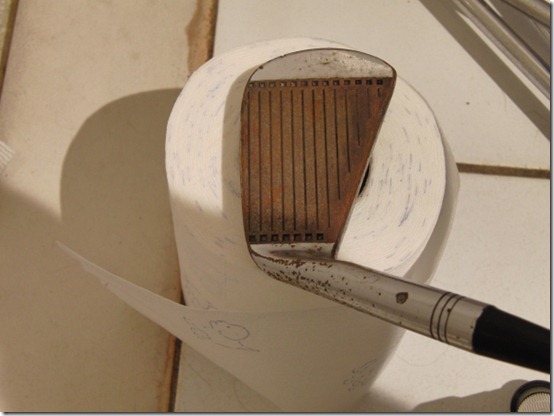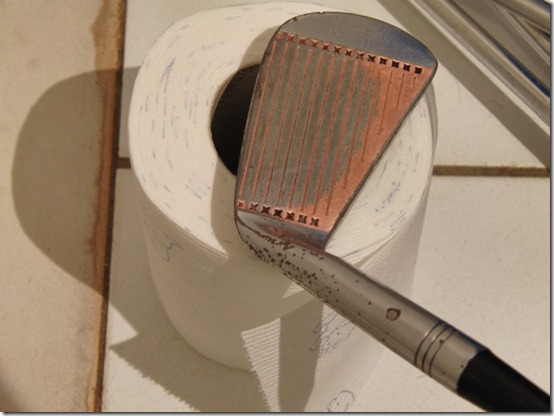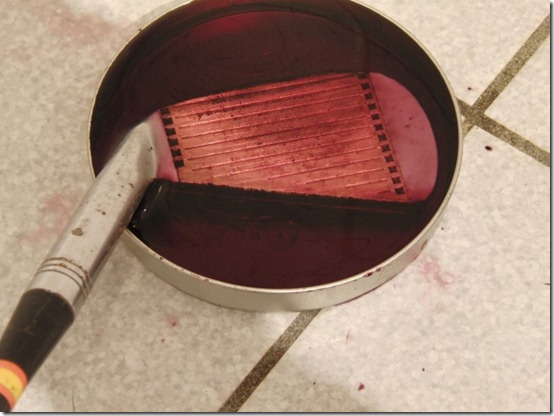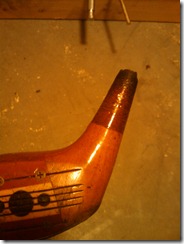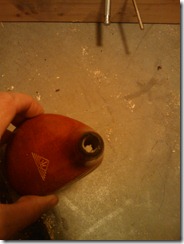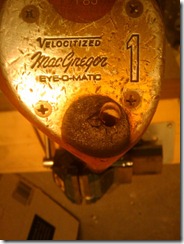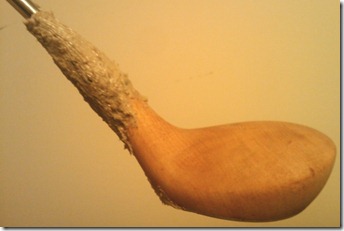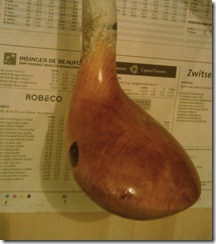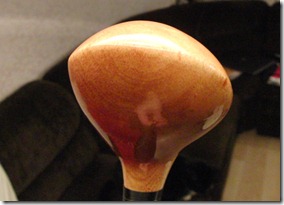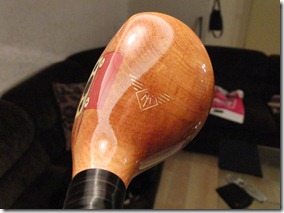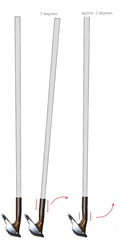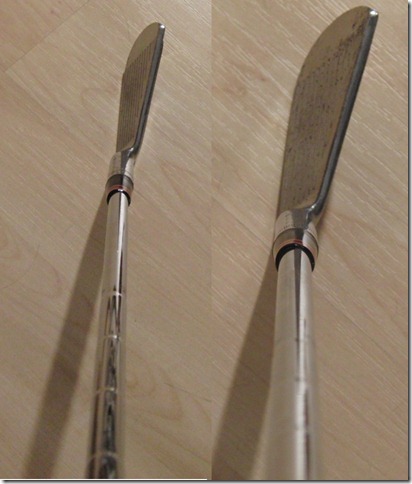Tuesday, September 20, 2011
Wednesday, September 7, 2011
Monday, August 15, 2011
First person Tiger shooter
Love these vids! There’s so much to be learned from them.
For beginners who have only watched down the line or caddy view footage of swings this is a real eye opener.
If you watch down the line stuff only, you can easily be fooled into thinking that you should try to recreate those lines you see. If you try that you WILL come over the top, or at least disconnect the arms from the body. The golf swing is not about straight lines and this shows it.
Wednesday, August 10, 2011
Thursday, July 28, 2011
Owning one’s Swing
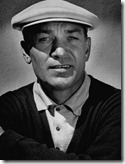
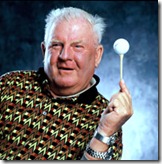
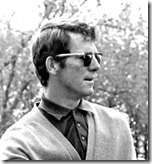

I always thought that when people talked about “owning one’s swing”, they meant something like this:
To know the what, the how and the why of your swing inside out, and being able to perform accordingly. When it comes to your swing, there can be no unanswered questions. Nothing can stand in the way of you and the most efficient motion possible given your physical and mental capabilities.
I found this interesting quote in an old article about George Knudson:
“What is it that allows a golfer to own his golf swing? When you consider there might have been only three or four in the history of the game, the answer isn’t as complicated as you might think.
It means repetition of the highest level.
It means a swing plane that is not rerouted and does not change regardless of the club.
It means impeccable posture and perfect balance.
But most importantly, in the cases of Hogan, Moe and George, it means a perfectly square clubface approaching impact that remains square through the shallow, long and low action after impact. One need just look at pictures of the three of them in action.”
~ Irv Lightstone, 2006 (source)
So Irv looked at what (he thought) were the similarities between the golfers who supposedly owned their swings.
So in the end it comes down to this:
Perfect execution of perfect technique with perfect consistency.
In my opinion, achieving this can only be helped by really knowing the what, the how and the why of your swing.
Or else just beat a lot of balls. ![]()
Tuesday, July 26, 2011
Effects of grip pressure on off center strikes
The below high speed (1000 fps) video is fascinating because it shows us what happens when a ball is struck off the toe with a blade.
The first part of the clip shows a ball being hit with passive hands with very light grip pressure.
The second half of the clip shows us a similar ‘toe hit’, this time with a very firm grip pressure. The nice thing about the shot hit with a firmer grip pressure is that it will still travel in roughly the same direction as a center strike, only slightly less far.
To me this footage suggests that a firm grip is the better option. A good firm grip can also keep twisting of the club face to a minimum when you’re in the rough.
DISCLAIMER: Proceed with caution…
A firm grip has to be compatible with your type of swing! And even if that’s the case you’ll still need to train your wrists to stay ‘loose’ while maintaining a good firm grip with the fingers.
I won’t go into the details of the different swing types; I just wanted to show you this video.
For more information please visit lagpressure’s website here.
Monday, July 25, 2011
Too rough for the PGA Tour
<rant>
The trimming of the rough at the Shaughnessy Golf and Country Club after the second round of the RBC Canadian Open has led to some interesting discussions about the state of the game.
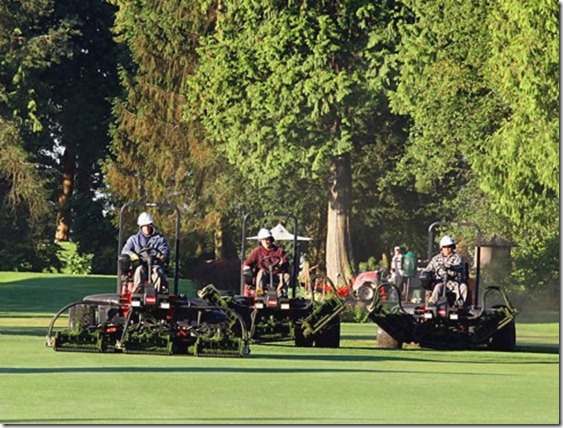
On most of the courses on the tour the rough is cut to 3 inches or less. This works in favor of the players that like to bomb it because a missed fairway is not that big of a deal. From the lighter rough the players can hold shots on the green even with the new (slightly less square) grooves.
As most of the courses on tour are both long, wide and open the players almost always have a clear shot to the green, even from the rough.
The anti accuracy age
Luke Donald about the rough at Shaughnessy: “I enjoy these classic courses, but I’m not a huge fan of long rough everywhere because it takes some of the skill away because you’re hitting the same shot from everywhere,” He said. “The rough adds pressure when you are on the tee because you know you have to hit it in the fairway to have a chance to get on the green.”
So the fact that you have to hack your way out of it seems to be the common argument against having rough. It takes some of the skill away of rescue shots he says.
I’d say you need more skills with the driver to keep it out of the rough. Don’t try to hit it a mile if you can’t keep it straight…
What he says about the rough adding pressure on the tee …
You poor thing… Wake up dude!! You’re playing on the ‘These guys are good’ PGA Tour. Suck it up,' stop whining and just play :)
How math in golf has changed:
NOW: Length & Short Game = Winning
PAST: (Accuracy && Length) & Short Game = Winning
Old school golf
These days it seems that only long hitters with great short game skills can dominate the field. It wasn’t that long ago when a relative short hitter like Corey Pavin could compete against big hitting players. He beat Greg Norman to win the 1995 US Open with smart and accurate play. There was more of a risk and reward element to golf back then, simply because of the fact that in those days missing a fairway often meant a one stroke penalty.
I much prefer this risk reward version of golf. The fact that there are more ways to get a good result makes the game more interesting to watch for me.
<sigh/></rant>
Friday, July 22, 2011
Tuesday, July 19, 2011
Dutch Threats: Joost Luiten
This is the first part in a series of swing vids of talented Dutch golfers.
Joost Luiten is a very good, aggressive type of player who I think we’ll be hearing from a lot these next couple of years on the European circuit.
Click on the links to find out more about him or just let his swing speak for itself. Enjoy!
http://en.wikipedia.org/wiki/Joost_Luiten
Monday, July 18, 2011
Monday, July 11, 2011
Mackenzie: The Golf Bag
For those who like to walk the course, a good bag is a great investment. The MacKenzie company specializes in high quality golf bags.
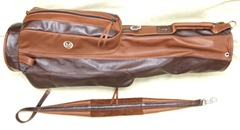 Their premium ‘Walker’ model (shown left) was originally designed by PGA tour player Peter Jacobsen, who also founded the company in the eighties.
Their premium ‘Walker’ model (shown left) was originally designed by PGA tour player Peter Jacobsen, who also founded the company in the eighties.
This all leather bag costs a little over $700 and, while the build quality certainly justifies the hefty price tag, I opted to go for the less expensive Llama model. The Llama retails for $250 and is hand-made in Portland, Oregon from water resistant ballistic nylon.
Premium leather details on various places give the bag a very classy look and the leather strap is very comfortable on the shoulders.
The bag weighs only 1.5 kilograms (3lbs) and has enough pockets to fit everything you need during a round.
I was most impressed with their customer service and willingness to accommodate specific requests.
If you are interested in buying a MacKenzie, please don’t hesitate to contact Thom!
Monday, July 4, 2011
European Senior Tour
In my opinion one of the most interesting tours is the European Senior Tour. Great players on classic golf courses, what’s not to like?
As you probably know there are lots of beautiful courses around that are deemed too short for regular tour events. European Senior Tour events are also played on these kinds of courses. As fairways get narrower shot making, placement and trajectory control becomes more important than length. The senior players grew up playing these kinds of courses and you can learn a lot just by watching them dissect a course. Guys like Ian Woosnam, Sam Torrance, Sandy Lyle and Peter Fowler have been competing at the top for decades and it’s just great to to see that they still have some great golf in them.
Schedule
Here is a list of this year’s upcoming events; I can highly recommend attending at least one of them.
Jul 21-Jul 24 The Senior Open Championship 2011 Walton Heath G.C., Surrey,Surrey,England
Jul 28-Jul 31 US Senior Open 2011 Inverness Club, Toledo,Ohio,USA
Aug 19-Aug 21 Cleveland Golf / Srixon Scottish Senior Open Fairmont St. Andrews,St. Andrews, Fife,Scotland
Sep 02-Sep 04 Travis Perkins plc Senior Masters Duke's Course, Woburn GC,Woburn,England
Sep 16-Sep 18 Casa Serena Open Casa Serena Golf,Prague,Czech Republic
Sep 22-Sep 24 Cannes Mougins Masters Cannes Mougins,Cannes,France
Sep 29-Oct 01 Senior Open de Portugal Belas Clube de Campo,Lisbon,Portugal
Oct 14-Oct 16 Benahavis Senior Masters La Quinta Golf & Country Club,Marbella,Spain
Nov 04-Nov 06 ISPS Handa Australian Senior Open TBC,TBA,Australia
Nov 18-Nov 20 Fubon Senior Open Miramar Golf & Country Club,Taipei,Taiwan
Dec 09-Dec 11 MCB Tour Championship Constance Belle Mare Plage,Poste de Flacq,Mauritius
Taken from: http://www.europeantour.com/seniortour/index.html
Van Lanschot Senior Open at The Royal Hague G&CC
Last month the senior tour came to The Netherlands and they played The Royal Hague G&CC (aka ‘De Haagsche’ in Dutch). The course is regarded as one of the finest examples of a links course on Europe’s mainland. During the first few days of the tournament the heavily sloped course showed its teeth as the rain and wind prevented players from going low. On Saturday, the lowest score was three under by Peter Fowler. On Sunday, Des Smyth played some incredible golf. Coming from 4 strokes down behind Fowler, he put together a string of birdies and two eagles to finish at 6 under.
Here are some swing clips that were taken at this particular event:
Friday, June 24, 2011
Here comes Johnny
Here he shows us 4 different ways to draw or fade the ball.
Note that Johnny does not take into consideration the 'new ballflight laws' aka the 'D Plane' .
Friday, June 17, 2011
DIY underlistings for leather wrap grips.
The following video outlines the process of creating your own underlistings for vintage leather wrap grips. Sometimes when you need to reshaft vintage irons the original grips are still usable while the underlistings are not. They either are glued to the old shafts or are disintegrating due to age. Since I could not find any underlistings on eBay I decided to create my own.
This method allows for more than just the standard tapered shape of the grip. If you want you can even do a reverse tapering. Or maybe you just want to have the part under the right hand built up a bit.
For these old Hogan grips from the 1950’s I managed to reuse the end caps, the grip collars and the wraps themselves. I had to cut the collars with a knife but they will go back on the new shafts together with some black electricity tape of the same width.
Have fun!
Saturday, June 11, 2011
Shaft Removal redone
This is an addendum to the ‘restoring irons’ series I did last year. Separating the head from the shaft can be a difficult task, and some of the older sets need a different treatment than the one described here.
While reshafting a set of Ben Hogan 1953 Precisions I found that the conventional way of removing the shafts did not work as expected. I had removed the shaft pins and torched the hosel until it was red hot. The head would not move at all. If this happens it means that the epoxy is not the reason that the head does not come loose. I could think of only two possible reasons.
The first assertion is that corrosion has formed a bond between the shaft and the head; not implausible after 58 years of use.
The second assertion is that the shafts have been hammered into a very tight hosel, thus forming a mechanical bond that simply can’t be broken by heat.
Either way, I knew I needed to resort to a different way of getting the shafts out of the clubheads. What I did was this:
- Cut the shaft an inch above the ferrule.
- Insert a solid metal rod into the shaft. The tighter it fits the better it will work.
- Clamp the shaft (with the rod inside) in a vice and make sure that the shaft can’t twist.
- Grab the head with two hands and try to turn it loose.
- Once it gives in you can start to pull it off.
It turns out that the shaft tips weren’t abraded at all and that little or no epoxy had been used for these clubs. Epoxies weren’t very strong those days so I figure they just made sure that they also secured them with pins and the mechanical bond by hammering the shafts into a tight hosel.
As described above, you must put a rod inside the shaft before clamping it in a vice. If the rod is too small in diameter the shaft can break due to the twisting of the head.
This happened to me but fortunately I managed to fix it by removing the ferrule and repeating the process with a better fitting rod. (see below pics)…
Friday, June 10, 2011
Mickey Wright and George Knudson: Swinging in Style
Mickey WrightMickey won 82 events on the LPGA Tour, putting her in second place on the all-time win list. She is also the only golfer in LPGA history to hold all four majors simultaneously.
Still not impressed? Ben Hogan said her swing was the best he'd ever seen.
"When I play my best golf, I feel as if I'm in a fog, standing back watching the earth in orbit with a golf club in my hands."
George KnudsonKnudson won five Ontario Opens, five Canadian PGA Championships, and posted eight major victories on the U.S. PGA tour. He finished tied for second (with Tom Weiskopf and Billy Casper) one shot behind George Archer in the 1969 US Masters.
"transfer weight and rotate"
Friday, April 22, 2011
Wednesday, March 30, 2011
Yet another Hogan vid
Here is some rare footage of Mr. Hogan practicing at Colonial CC, only 10 months after his tragic car accident.
Monday, February 28, 2011
Euro’s Rule the World Rankings
The top 4 spots are all occupied by Europeans with Luke Donald in 3rd place after an impressive victory at the WGC-Accenture Match Play Championship in Arizona this weekend. If he keeps going like this he’ll be a candidate for the top spot with consistency based driving and stellar short game / putting.
Sunday, January 30, 2011
Removing Rust
I got a set of irons (1957 MacGregor M85 Colokrom) for a bargain. These were in pretty bad condition. This iron was the worst. Lots of rust stains where the chrome was gone. I decided to try and remove the rust spots using a liquid remover.They came out better than expected. If I like these irons enough I might consider having them rechromed by the ironfactory at some time.
I really like how those colokrom copper inserts turned out. The pitching wedge (not pictured here) has a small circle of wear marks around the sweetspot. These have been played by an accomplished player. Feels good to give these irons a second life.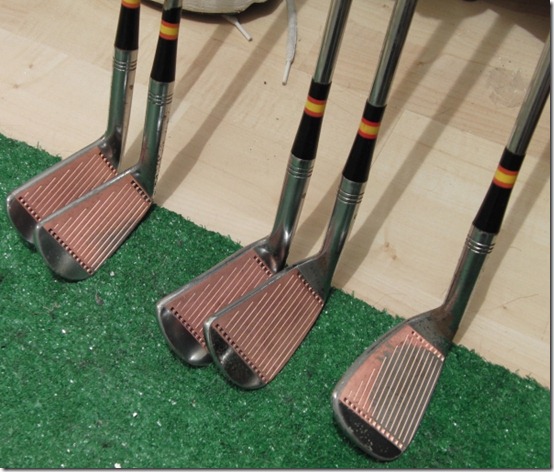

Wednesday, January 19, 2011
My first DIY custom built persimmon driver
Some time ago I bought a set of MacGregor persimmon (1,4 and 5) woods on eBay with the intention of rebuilding them.
By 'rebuilding' I mean:
- Replacing the shaft and putting on a new grip.
- Changing the lie angle.
- Changing the way the club sits at address (open, neutral or closed).
- Changing both dead weight and swing weight of the club.
- Refinishing the club so that it looks like it's never been hit.
I won’t describe the entire process in this post. Should you be interested in the steps involved, then please contact John Erickson. He has put together a very good document containing detailed step-by-step instructions. You can get it by sending him a small donation in return for his efforts in putting the document together.
For a first attempt I actually think I did a pretty good job. I did make some mistakes along the way (e.g. I accidently incinerated some wood next to the sole plate, and there also was an incident with the lead weights inside the cavity…) but I learned a great deal along the way.
Here is a photo impression of the rebuild:
Tuesday, January 18, 2011
Removing offset
I recently found out how to remove the offset on irons.
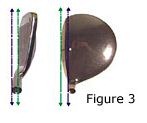 Offset means that the front edge (left side) of the hosel is in front of the leading edge of the club when looking down on it at address. It places the center of gravity further back, which 'helps' us to close the clubface in the impact zone.
Offset means that the front edge (left side) of the hosel is in front of the leading edge of the club when looking down on it at address. It places the center of gravity further back, which 'helps' us to close the clubface in the impact zone.
Onset means that the front edge of the hosel is behind the leading edge of the club. The amount of offset or onset is calculated by measuring the distance between the front of the hosel and the leading edge.
Face progression is different in that it is defined as the distance between the center of the hosel and the leading edge. This can be both a positive or negative value.
If you strengthen the lofts on your irons you will typically increase the amount of offset because the hosels will be bent a bit. So when I heard that there was a way to remove the offset on a club I decided to give it a go.
Even though the process is fairly simple I found that it might take some time to get the hang of it. The longer the hosel of the club, the easier it will be to remove offset.
- First you need to bend the loft of the club about 5 degrees weaker. This bend operation must be performed by placing the bending bar at the top of the hosel (where the shafts meets the hosel).
- Then after that you need to perform a 'regular' bend operation, just above the clubhead. Bend the loft back to its original strength.
- Now have a look and see if the amount of offset is less than before. You will probably have to repeat these steps a couple of times before you will get good results; but it will be well worth it in the end.
Here are the before and after pics of a Hogan pc5 3 iron:


